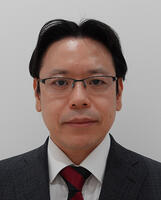Research Experience
-
2012.04-Now
Waseda University Faculty of Science and Engineering Professor
-
2007.04-2012.03
Waseda University Faculty of Science and Engineering Associate Professor
-
2005.04-2007.03
Waseda University Faculty of Science and Engineering Associate Professor
-
2003.10-2007.03
Japan Science and Technology Agency PRESTO Researcher
-
2003.04-2005.02
Waseda University Graduate School of Science and Engineering Lecturer
-
2000.04-2003.03
Japan Society for The Promotion of Science Research Fellow (PD)
-
1999.04-2000.03
Japan Society for The Promotion of Science Research Fellow (PD)
-
1997.04-1999.03
Japan Society for The Promotion of Science Research Fellow (DC1)


Click to view the Scopus page. The data was downloaded from Scopus API in January 06, 2026, via http://api.elsevier.com and http://www.scopus.com .